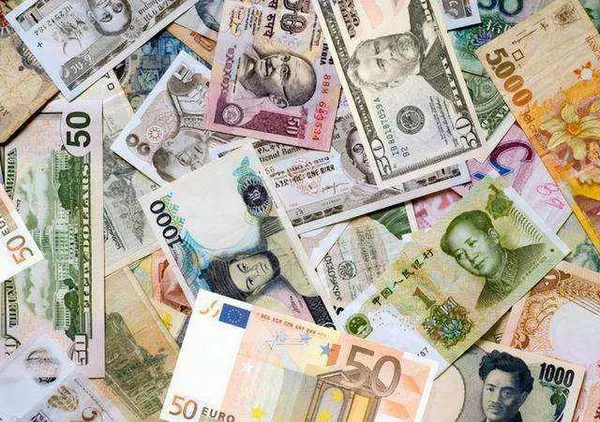The English pound, often symbolized as £ and referred to as “pound sterling,” is the official currency of the United Kingdom. This historic currency, with its distinctive appearance, has been in use for centuries. Its design and security features have evolved over time to stay ahead of counterfeiters. In this article, we will delve into the visual and historical aspects of the English pound, exploring its various denominations, security features, and its enduring legacy.
Denominations
The English pound comes in various denominations, each featuring unique designs and characteristics that make them distinguishable. These denominations include:
Pound Coin: The £1 coin is a bimetallic coin featuring a gold-colored outer ring and a silver-colored inner core. The obverse side typically bears an image of the reigning monarch. The reverse side often showcases a variety of designs, from the Royal Coat of Arms to commemorations of historical events or landmarks.
Banknotes: The Bank of England issues paper banknotes in various denominations, including £5, £10, £20, and £50. Each denomination features a unique design and color scheme. The reverse side of the banknotes often highlights influential figures in British history, such as Winston Churchill, Jane Austen, and Charles Darwin.
Sovereign: Although not commonly used in everyday transactions, the sovereign is a historic gold coin with a face value of £1. This coin is more of a collector’s item or a store of value and is not often seen in circulation.
Visual Elements
The visual design of English pounds is an integral aspect of their identity. These elements are carefully crafted to reflect the history, culture, and heritage of the United Kingdom.
Portraits of Monarchs: The obverse side of English pound coins typically features a portrait of the reigning monarch. This serves as a reminder of the strong historical ties between the British monarchy and the currency. The design of the portrait may change with each new monarch, reflecting their age and reign.
Historical Figures: English banknotes often highlight notable figures in British history. For instance, the £5 note features a portrait of Sir Winston Churchill, the former Prime Minister of the United Kingdom. The use of famous figures on banknotes reflects their significant contributions to the country’s culture and heritage.
Cultural Symbols: The reverse sides of pound coins and banknotes also incorporate various cultural symbols, landmarks, and historical events. For example, the £20 banknote showcases the renowned artist J.M.W. Turner, along with his painting “The Fighting Temeraire,” an iconic representation of British maritime history.
Security Features
To protect against counterfeiting, English pounds incorporate a range of security features that have evolved over time. These features ensure the authenticity of the currency and safeguard it from counterfeiters. Some of the key security features include:
Holograms: Pound coins and banknotes often include holographic elements that change appearance when tilted, making them difficult to replicate. These features are not only visually appealing but also highly effective in deterring counterfeiters.
Watermarks: Many English banknotes contain watermarks that are visible when held up to the light. These watermarks often depict the portrait featured on the note, enhancing the overall security of the currency.
Raised Print: Banknotes include raised print features that can be felt when touched. This tactile element aids those with visual impairments in identifying the currency’s denomination.
Ultraviolet Ink: Special ink that is only visible under ultraviolet (UV) light is used in the printing of English pounds. This ink is a useful tool for banknote authentication and can be easily checked with UV lamps.
Microlettering: Tiny text is incorporated into the design of both coins and banknotes, making it challenging for counterfeiters to reproduce. These small details are an essential part of the security features.
Security Threads: Many banknotes contain security threads embedded within the paper. These threads are partially visible on the note’s surface and can be seen more clearly when held up to the light. They are another layer of protection against counterfeiting.
Historical Perspective
The history of the English pound is a tale of evolution, resilience, and adaptation. Its origins can be traced back to the ancient Roman period when silver pennies were used as currency. Over the centuries, the pound underwent various transformations, both in terms of its appearance and the underlying value of its coins.
One of the most significant turning points in the history of the English pound was the adoption of the gold standard in the 19th century. During this period, the pound was defined by a fixed quantity of gold, which gave it substantial stability and international recognition.
In 1914, the outbreak of World War I led to the suspension of the gold standard, and the pound’s value became tied to government fiat. However, it was not until 1971 that the pound officially decoupled from the gold standard, becoming a fiat currency.
The transition from traditional paper banknotes to polymer notes represents another important milestone in the currency’s history. Polymer notes are more durable, resistant to wear and tear, and incorporate advanced security features, making them significantly more resilient against counterfeiting.
Conclusion
The English pound, with its distinct denominations, visual elements, and robust security features, is not only a means of exchange but also a reflection of the United Kingdom’s rich history and culture. From the portraits of monarchs to the use of historical figures and cultural symbols, the design of pound coins and banknotes encapsulates the essence of British identity.
As we have explored in this article, the English pound has a long and fascinating history, marked by moments of transformation, resilience, and adaptation. Its evolution from gold-backed currency to fiat currency, as well as the transition to polymer banknotes, reflects the currency’s enduring legacy.
The English pound continues to be a symbol of economic stability, cultural heritage, and national pride. Its iconic design and advanced security features make it not only a valuable means of exchange but also a testament to the rich history of the United Kingdom.


